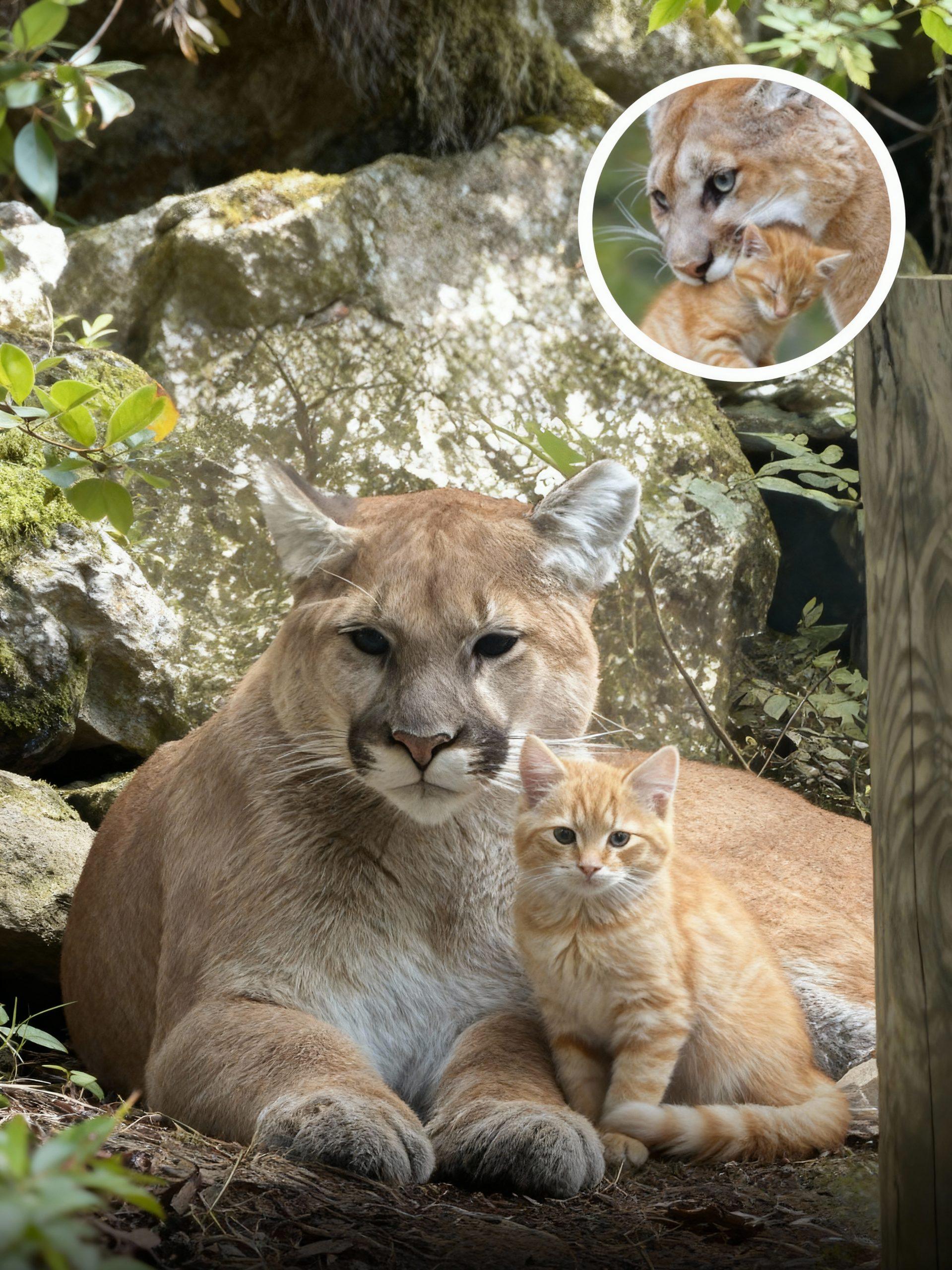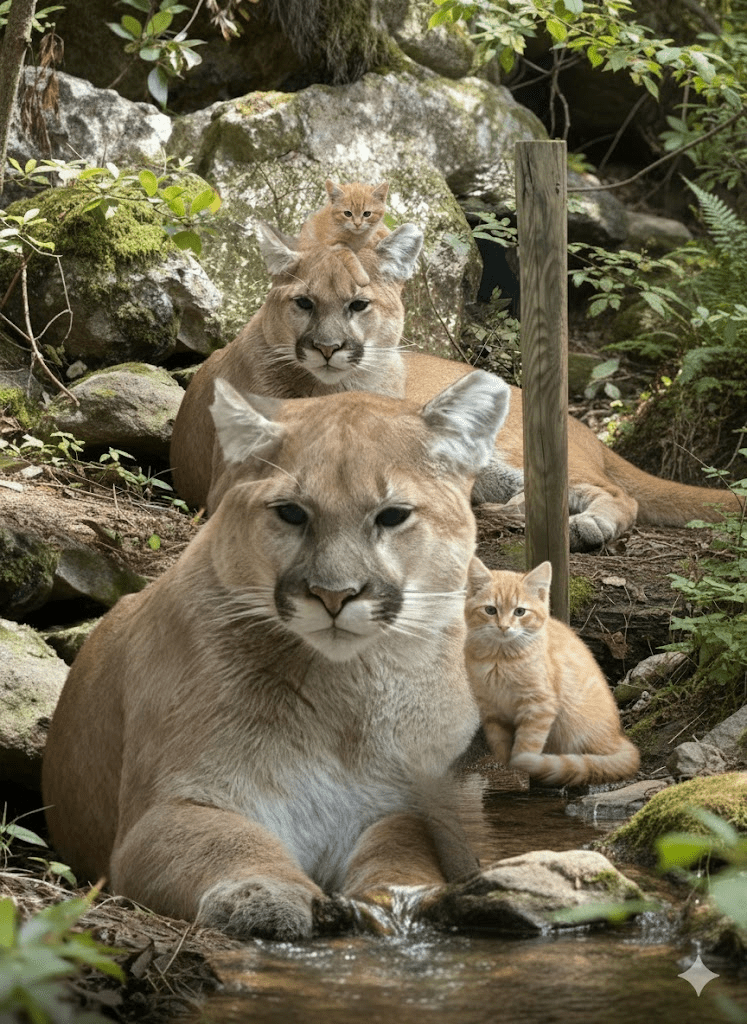In the heart of the wilderness, where survival dictates every interaction, an extraordinary sight has captivated wildlife enthusiasts and researchers alike: the improbable, yet undeniably tender, bond between a majestic cougar and a small, ginger domestic kitten. This captivating duo challenges our preconceived notions of predator-prey dynamics and offers a profound glimpse into the complexities of interspecies relationships. While the exact origins of this unusual pairing remain shrouded in mystery, the visual evidence speaks volumes, depicting a cougar exhibiting behaviors typically reserved for its own offspring – a testament to an innate compassion that transcends biological boundaries. This remarkable phenomenon not only provides a unique case study for ethologists but also serves as a poignant reminder that connection and empathy can flourish in the most unexpected of circumstances, prompting us to reconsider the depth and breadth of emotional intelligence across the animal kingdom. The images capture moments of quiet companionship, mutual curiosity, and an almost maternal protectiveness from the cougar, leaving us to ponder the intricate web of instincts, learned behaviors, and perhaps even individual personalities that have converged to forge such an astonishing alliance.

One of the most striking aspects of this observation is the complete deviation from typical predatory behavior. Cougars, apex predators of the Americas, are known for their solitary nature and highly efficient hunting prowess, primarily preying on deer, elk, and smaller mammals. The presence of a domestic kitten, a species typically viewed as potential prey, not only alive but seemingly integrated into the cougar’s immediate vicinity, defies conventional ecological understanding. This anomaly suggests a powerful override of instinct, possibly triggered by the kitten’s perceived vulnerability, its unique scent profile, or perhaps an earlier, non-threatening encounter that established an initial truce. The cougar’s posture, often relaxed and attentive, further reinforces the idea that it perceives the kitten not as a meal, but as something to be observed, and even, protected. This interaction forces scientists to consider the nuances of predator behavior, acknowledging that while instinct is strong, it is not always absolute and can be influenced by a myriad of environmental and individual factors.

Examining the social implications of such a bond, we delve into the realm of interspecies communication and empathy. The kitten, despite its diminutive size and inherent vulnerability, appears remarkably at ease in the cougar’s presence. This comfort suggests a form of communication, perhaps non-verbal cues or scent signals, that has allowed the two disparate creatures to establish a unique rapport. The cougar’s gentle nuzzling and tolerant demeanor, as evidenced in some observations, echo the interactions between a mother and her cub, further supporting the idea of a protective or even affectionate sentiment. Such displays of empathy across species, while rare, are not entirely unprecedented in the animal kingdom, often observed in circumstances where young or vulnerable individuals are adopted by adults of a different species. These instances challenge the anthropocentric view of complex emotions, suggesting that feelings like care, compassion, and protectiveness are not exclusively human traits.







